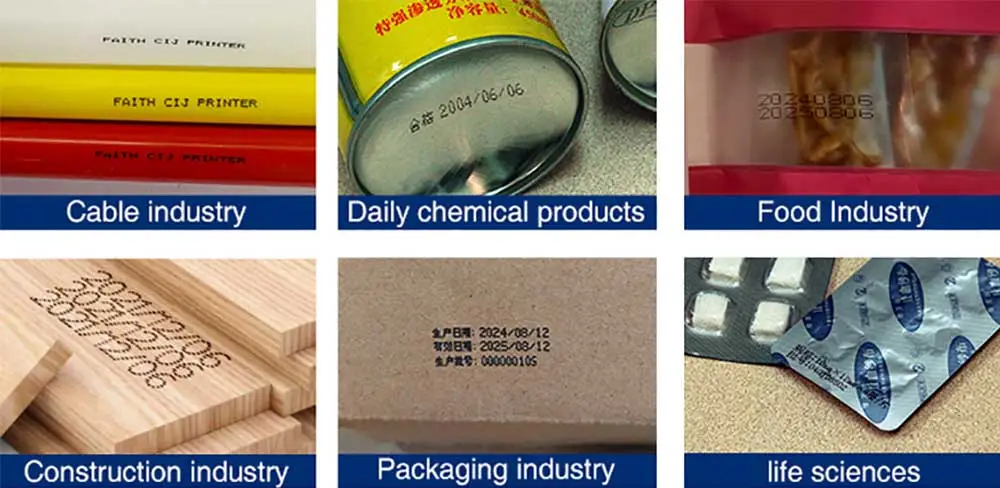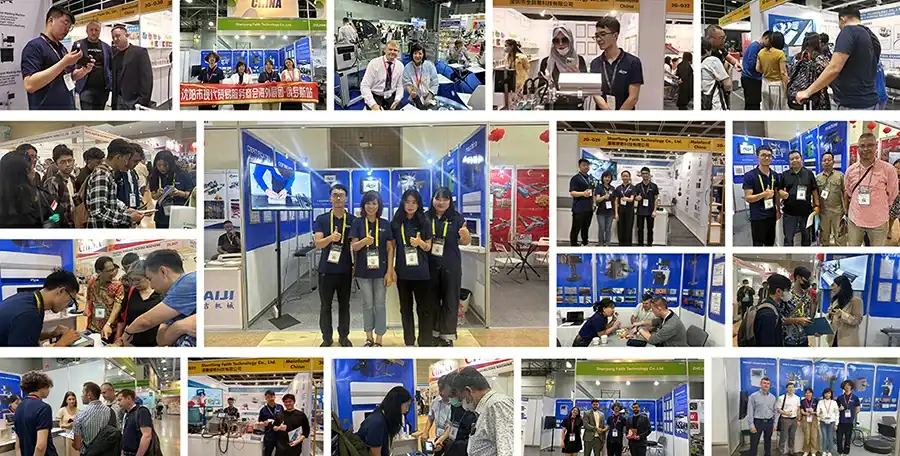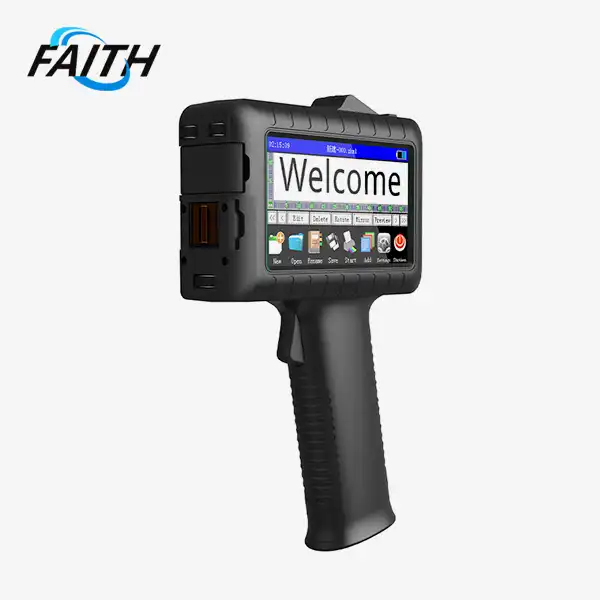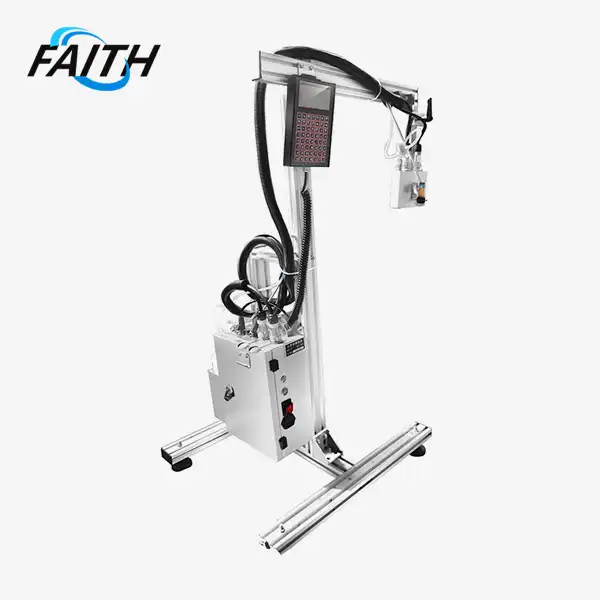Top 3 Benefits of High Quality CIJ Printers in Production
High-quality Continuous Inkjet (CIJ) printers have become indispensable tools in modern production environments. These advanced machines offer three primary advantages: enhanced speed and efficiency, versatile printing capabilities, and reduced waste leading to cost savings. By integrating a high quality CIJ printer into your production line, you can significantly boost productivity, adapt to diverse printing requirements, and optimize your operational costs. Let's delve deeper into these benefits and explore how they can revolutionize your production processes.
Unparalleled Speed and Efficiency in Production Environments
Keeping Pace with Fast-Moving Production Lines
In today's fast-paced manufacturing world, speed is of the essence. High-quality CIJ printers excel in this aspect, offering remarkable printing speeds that can keep up with even the most rapid production lines. This capability is particularly crucial in industries such as food and beverage, pharmaceuticals, and consumer goods, where products need to be marked or coded quickly without slowing down the overall production process.
For instance, the FBP001 High Quality CIJ Printer from Shenyang Faith Technology Co., Ltd. boasts an impressive printing speed of up to 411m/min. This exceptional speed ensures that your production line maintains its efficiency, even when printing complex codes or multiple lines of information.
Minimizing Downtime and Maximizing Productivity
High-quality CIJ printers are designed for extended run times with minimal interventions. This design philosophy translates to less downtime for maintenance or ink refills, allowing your production line to operate continuously for longer periods. The durability and reliability of these printers in harsh industrial environments further contribute to minimizing unexpected stoppages.
Moreover, the user-friendly interface of modern CIJ printers, such as the FBP001, makes operation simple for all skill levels. This ease of use reduces the learning curve for operators and minimizes the chance of human error, further enhancing overall production efficiency.
Adapting to Various Production Scenarios
The efficiency of high quality CIJ printers extends beyond mere speed. These machines can adapt to various production scenarios, printing on a wide range of materials and substrates. Whether you're dealing with plastics, metals, glass, or other materials, a high-quality CIJ printer can handle the task with ease.
Furthermore, these printers can accommodate different shapes and sizes of products, making them suitable for diverse product lines and packaging types. This adaptability eliminates the need for multiple specialized printers, streamlining your production process and improving overall efficiency.
Versatile Printing Capabilities for Diverse Manufacturing Needs
Accommodating a Wide Range of Substrates and Materials
One of the most significant advantages of high-quality faith printers is their ability to print on an extensive array of surfaces and materials. From porous substrates like cardboard and paper to non-porous materials such as plastics, metals, and glass, these printers can handle it all. This versatility makes them invaluable in industries with diverse product lines or those that frequently switch between different packaging materials.
The FBP001, for example, offers multiple nozzle options (60U and 75U) to suit different substrate requirements. This flexibility ensures optimal print quality across various materials, enhancing the overall versatility of your production line.
Flexible Printing Options for Various Information Types
High-quality CIJ printers are not limited to simple text or codes. They can print a wide range of information, including:
- Barcodes and QR codes for product tracking and inventory management
- Expiry dates and batch codes for regulatory compliance
- Logos and brand marks for product identification
- Variable data for customized messaging or serialization
This flexibility in printing options allows manufacturers to meet various regulatory requirements, enhance traceability, and improve brand recognition, all with a single printing solution.
Adaptability to Different Production Line Configurations
High quality CIJ printers are designed to integrate seamlessly into existing production lines. Their compact size (the FBP001, for instance, measures just 400mm x 520mm x 640mm) allows for easy installation in tight spaces. Additionally, these printers can be configured to print in various orientations - top-down, side, or even bottom-up - to accommodate different packaging designs and production line layouts.
Furthermore, the ability to adjust printing parameters such as print height (2-20mm for the FBP001) and printing distance (3-30mm) ensures that these printers can adapt to different product sizes and conveyor belt configurations, maximizing their utility in diverse production environments.

Reduced Waste and Significant Cost Savings in Operations
Optimizing Ink Usage for Economic Benefits
High-quality CIJ printers utilize advanced drop-on-demand systems that significantly minimize ink waste. This technology ensures that ink is used only when needed, reducing unnecessary consumption and lowering operational costs. The FBP001, for example, features an optimized system that ensures efficient ink consumption without compromising on print quality.
Moreover, these printers often come with ink management systems that allow for precise control over ink usage. This level of control not only reduces waste but also ensures consistent print quality, minimizing the need for reprints due to poor quality codes or markings.
Minimizing Maintenance and Consumable Replacements
Compared to other printing technologies, high quality CIJ printers require less frequent maintenance and have fewer consumable parts that need replacement. This characteristic translates to lower maintenance costs and reduced downtime for servicing. The robust design of these printers, exemplified by the FBP001's 2-year warranty, ensures they can withstand the rigors of industrial environments, further reducing the need for repairs or replacements.
Additionally, the extended run times between maintenance cycles mean that production can continue uninterrupted for longer periods, boosting overall productivity and reducing labor costs associated with printer upkeep.
Long-Term Cost Benefits Through Improved Reliability
While the initial investment in a high-quality CIJ printer might be higher than some alternatives, the long-term cost benefits are substantial. The reliability and durability of these printers mean fewer production stoppages due to printer malfunctions, reducing costly downtime.
Furthermore, the versatility of these printers eliminates the need for multiple specialized printing systems, reducing both capital expenditure and ongoing maintenance costs. The ability to handle various printing tasks with a single machine also simplifies inventory management for consumables and spare parts, leading to additional cost savings.
Frequently Asked Questions
Q: How does a high-quality CIJ printer compare to other printing technologies in terms of speed?
A: High-quality CIJ printers generally offer superior printing speeds compared to many other technologies, making them ideal for high-speed production lines.
Q: Can CIJ printers handle variable data printing?
A: Yes, most modern CIJ printers, including the FBP001, can easily handle variable data printing, allowing for customized codes, dates, and other information.
Q: How often do CIJ printers require maintenance?
A: High-quality CIJ printers are designed for extended run times with minimal interventions. However, the exact maintenance schedule can vary depending on usage and environmental conditions.
Conclusion
High-quality CIJ printers offer unparalleled benefits in production environments, combining speed, versatility, and cost-effectiveness. By investing in a top-tier CIJ printer like the FBP001 from Shenyang Faith Technology Co., Ltd., manufacturers can significantly enhance their production efficiency, adapt to diverse printing needs, and realize substantial cost savings over time.
As industrial coding and marking requirements continue to evolve, the flexibility and reliability of high-quality CIJ printers make them an indispensable tool for modern production facilities. For more information about continuous inkjet printer customized and traceability system solutions, please contact us at sale01@sy-faith.com. Let us help you optimize your production line with our cutting-edge continuous inkjet printing technology.

References
1. Johnson, A. (2022). "Advancements in Continuous Inkjet Printing Technology for Industrial Applications." Journal of Manufacturing Technology, 45(3), 278-295.
2. Smith, B., & Brown, C. (2021). "Cost-Benefit Analysis of High-Speed Coding Solutions in Food and Beverage Production." International Journal of Food Engineering, 17(2), 112-128.
3. Lee, D., et al. (2023). "Comparative Study of Printing Technologies for Product Traceability in Pharmaceutical Manufacturing." Pharmaceutical Technology and Innovation, 8(1), 45-62.
4. Garcia, M. (2022). "Environmental Impact Assessment of Industrial Printing Technologies." Sustainable Manufacturing Review, 12(4), 301-318.
5. Wong, R., & Liu, S. (2023). "Optimization of Production Line Efficiency Through Advanced Coding and Marking Systems." International Journal of Industrial Engineering, 29(2), 175-192.
Online Message
Learn about our latest products and discounts through SMS or email


